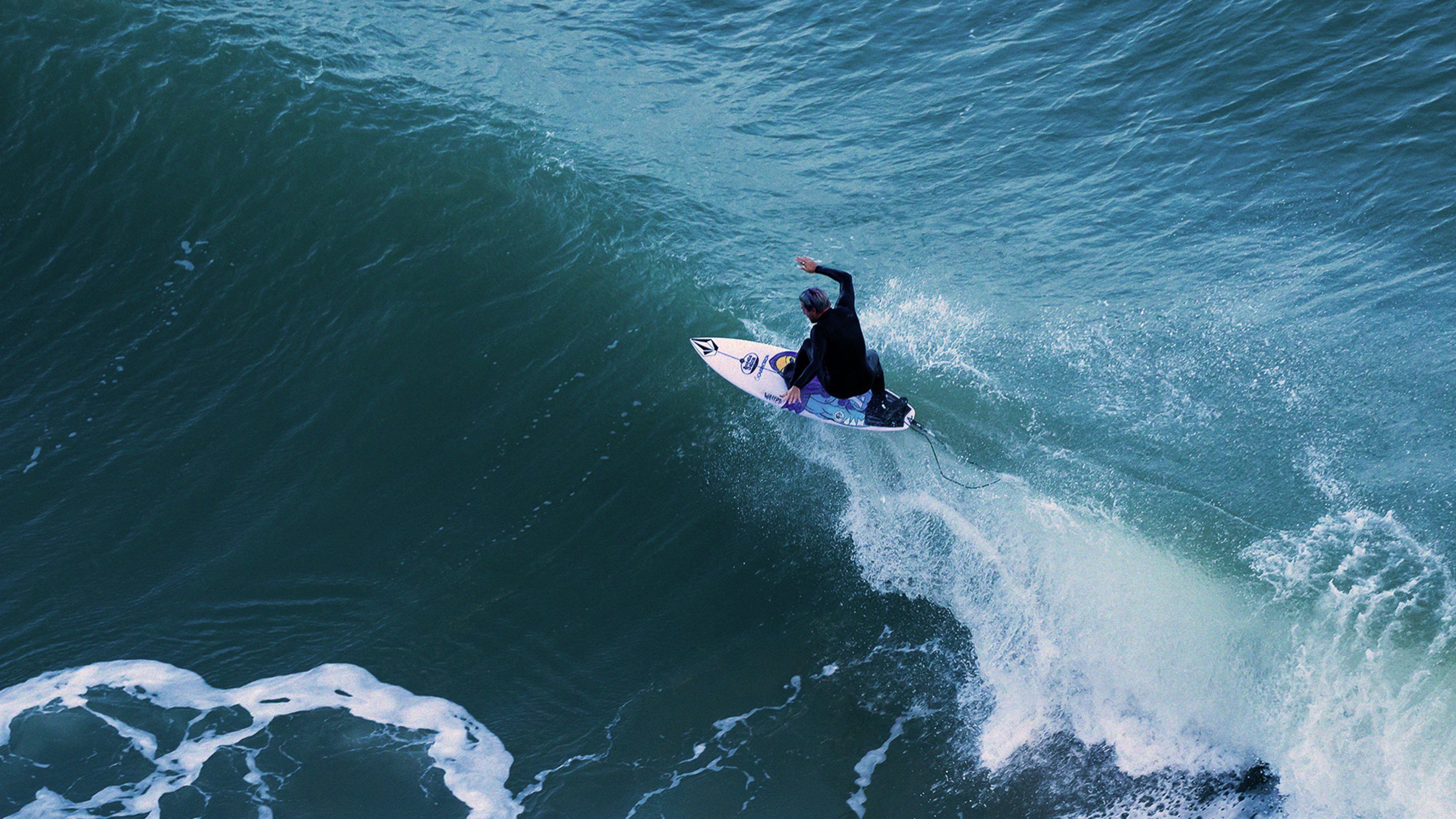
WHAT IS A SUMMER WETSUIT?
We all know the best summer wetsuit is no wetsuit at all. Unfortunately, we are not all lucky enough to live in the tropics. A wetsuit qualifies as a summer wetsuit when the neoprene thickness is 3mm or thinner. Ranging from a commonly used 3/2 mm full suit to a 2/2 shortarm, a 2/2 shorty and everything in between. The main goal of a summer wetsuit is to give you enough thermal protection without overheating. Summer wetsuits should be as thin and flexible as possible. It protects you against wind and harmful UV rays from the sun at the same time.
SUMMER WETSUIT TYPES
Full suit, shortarm, long john or shorty. There are a lot of different summer wetsuits and the difference between them is huge. Choose the right wetsuit style depending on the water and air temperatures you surf in.
 FULL SUITS
FULL SUITS
The warmest summer wetsuit type is a 3/2 mm full suit with sealed outside and inside seams, single lined chest and back for added windchill protection. Look for plush quickdry lining on the chest and back for extra insulation. Depending on your location, use a wetsuit like when the water is still warming up. Perfect for late spring with water temperatures between 15~20°C, or in colder climates where the water doesn’t get much warmer than 15~20°C all summer. The warmer the climate, the less warm a wetsuit needs to be. So you can choose a double lined chest over a single lined chest, glued and blind stitched seams instead of sealed seams and a wetsuit without quickdry plush lining. Try to avoid flatlock seams in any fullsuit, as flatlock seams are not watertight and will cool you down quickly.
2/2MM FULL SUIT
A less common summer wetsuit type is a 2/2 mm full suit. This is the thinnest full suit available and mostly worn for sun protection rather than keeping you warm. They come in both glued and blind stitched (GBS) seams or non-waterproof flatlock seams.
Featured wetsuits
SHORTARM VS SHORTY-LONGLEG WETSUITS
When the water temperature rises to around 18~25°C in the European summer, use a shortarm wetsuit or shorty with long arms. Both wetsuits types are often available in both GBS or flatlock seam constructions. A shortarm wetsuit works especially well when the water is still a bit cold, but the air temperature is warm. It keeps your legs warm while gaining extra mobility in the arms when paddling because of the short arm sleeves. A shorty-longarm does the opposite: It keeps your body and arms warm when the air is cold while the water is still warm by the end of summer. Both shortarm and longarm shorties usually come in 2 mm thick neoprene panels.
SHORTIES
Shorties are shortarm and short leg wetsuits. They often come in non-waterproof flatlock seam construction. Shorties are only worn when the water and air temperatures are above 20°C. They give a bit of protection against the cold, but don’t expect much as the seams are not watertight and the neoprene is only 2mm thin. Shorties are the most affordable wetsuit type available.
NEOPRENE ACCESSORIES
You can consider other neoprene wetsuit items to use in summer, such as a longjohn, a long leg wetsuit with no sleeves and a low collar, usually available with a shoulder closure instead of a zip. You can use a 2mm neoprene top combined with boardshorts to keep your core warm but keep that ‘boardshorts feeling’. If your main concern is UV protection and not warmth, use a rash vest or lycra top. These usually have a UPF 50+ rating and protect you from sunburn without having to use sunscreen. Use neoprene reef booties to protect your feet when surfing on reefs or rocks.
Choose your wetsuit
WARMTH VS. STRETCH VS. UV PROTECTION
We can arrange summer wetsuits in different categories: warmth, stretch, and UV protection. Most summer wetsuits have panels between 3 and 2mm neoprene thickness. If you go for a summer wetsuit that focuses on warmth, you can start wearing a summer wetsuit earlier in the season. This means a more flexible, high-performance wetsuit when the water is still a bit chilly. This increases mobility while surfing without getting cold. A warm summer wetsuit usually features GBS and sealed seams, single lined chest and back and quickdry plush inside lining. Choose a high-end wetsuit with high-quality neoprene foam and lining to ensure a flexible unrestrictive wetsuit.
DOUBLE LINED GBS FLEXIBILITY
If you find flexibility, stretch and easy paddling more important than warmth because the water is warm enough, consider a summer wetsuit that is made for flexibility. Make sure to pick a wetsuit with high-quality double lined neoprene foam and glued and blind stitched (GBS) seams. A wetsuit without quickdry lining is slightly more flexible in these areas.
FLATLOCK WETSUITS
Flatlock stitched wetsuits don’t have waterproof seams and can only be used in warm water. Neoprene items or rash vests with flatlock seams are usually more affordable than glued and blind stitched wetsuits. Flatlock items are shorties or full suits without any high-end features or fancy seams. These suits are worn to protect you from the elements, but mainly from the sun, as they don’t provide much insulation. Note that any neoprene product has UV protection, so a full suit protects you better against the sun than a shorty.

Ready to surf?
Shop from €159












